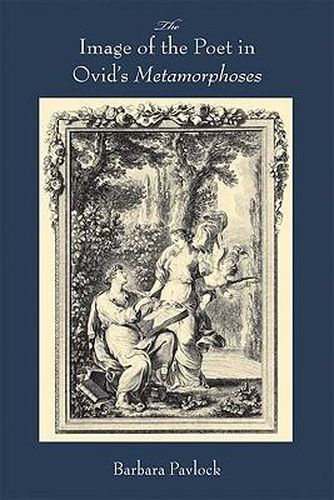Readings Newsletter
Become a Readings Member to make your shopping experience even easier.
Sign in or sign up for free!
You’re not far away from qualifying for FREE standard shipping within Australia
You’ve qualified for FREE standard shipping within Australia
The cart is loading…






Barbara Pavlock unmasks major figures in Ovid’s
Metamorphoses
as surrogates for his narrative persona, highlighting the conflicted revisionist nature of the
Metamorphoses . Although Ovid ostensibly validates traditional customs and institutions, instability is in fact a defining feature of both the core epic values and his own poetics.
The Image of the Poet
explores issues central to Ovid’s poetics - the status of the image, the generation of plots, repetition, opposition between refined and inflated epic style, the reliability of the narrative voice, and the interrelation of rhetoric and poetry. The work explores the constructed author and complements recent criticism focusing on the reader in the text. Ovid’s simultaneous play to and rebellion against epic tradition makes Narcissus both an idealized elegiac image through allusions to the poet’s own mistress in the Amores and an elegiac poet fixated on his own image. Through Narcissus’ demise, Ovid reflects the instability of visual images. In
Orpheus’ story of Venus and Adonis , an undercurrent of desire in Venus’ inset tale reveals a problematic self-involvement. The self-referential nature of Orpheus’ song then raises questions about his reliability as narrator, a theme that culminates in Ulysses’ contest with Ajax. Here Ovid undercuts heroic views about lineage and valor, but also highlights the many clever strategies by which Ulysses elevates himself over his rival, undermining Homer’s
Illiad
and
Odyssey . Ovid questions the authority of the narrator but also provides the means for understanding the problems at the core of his epic. Thus, in his time and ours, the reader ultimately emerges better equipped to assess inherited traditions in literary, social, and political spheres.
$9.00 standard shipping within Australia
FREE standard shipping within Australia for orders over $100.00
Express & International shipping calculated at checkout
Barbara Pavlock unmasks major figures in Ovid’s
Metamorphoses
as surrogates for his narrative persona, highlighting the conflicted revisionist nature of the
Metamorphoses . Although Ovid ostensibly validates traditional customs and institutions, instability is in fact a defining feature of both the core epic values and his own poetics.
The Image of the Poet
explores issues central to Ovid’s poetics - the status of the image, the generation of plots, repetition, opposition between refined and inflated epic style, the reliability of the narrative voice, and the interrelation of rhetoric and poetry. The work explores the constructed author and complements recent criticism focusing on the reader in the text. Ovid’s simultaneous play to and rebellion against epic tradition makes Narcissus both an idealized elegiac image through allusions to the poet’s own mistress in the Amores and an elegiac poet fixated on his own image. Through Narcissus’ demise, Ovid reflects the instability of visual images. In
Orpheus’ story of Venus and Adonis , an undercurrent of desire in Venus’ inset tale reveals a problematic self-involvement. The self-referential nature of Orpheus’ song then raises questions about his reliability as narrator, a theme that culminates in Ulysses’ contest with Ajax. Here Ovid undercuts heroic views about lineage and valor, but also highlights the many clever strategies by which Ulysses elevates himself over his rival, undermining Homer’s
Illiad
and
Odyssey . Ovid questions the authority of the narrator but also provides the means for understanding the problems at the core of his epic. Thus, in his time and ours, the reader ultimately emerges better equipped to assess inherited traditions in literary, social, and political spheres.